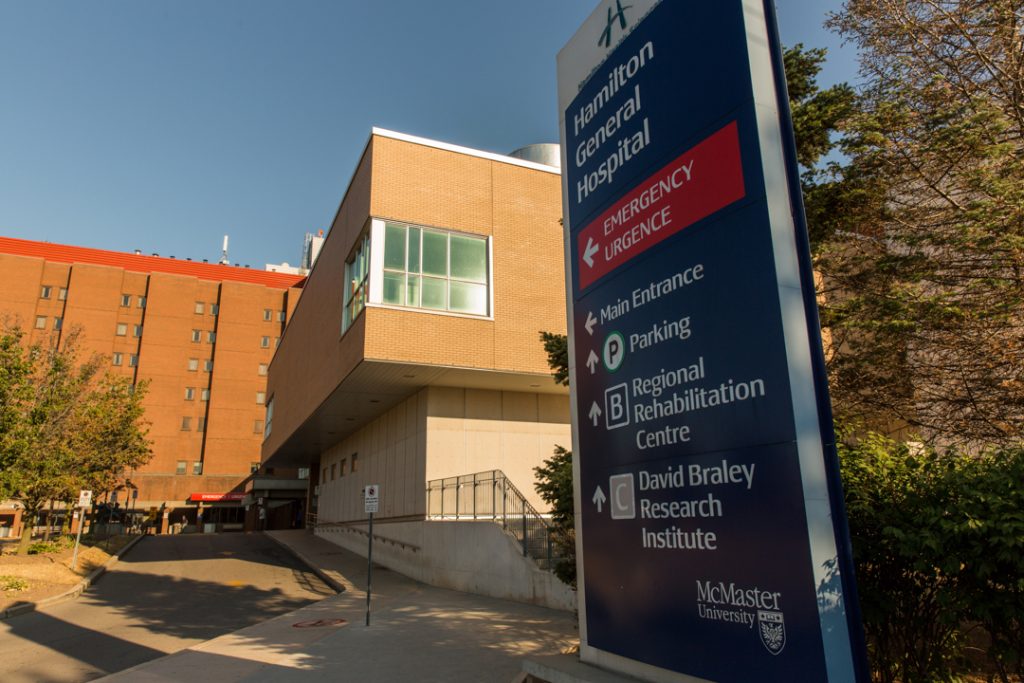
Update on pressures across Hamilton Health Sciences’ adult sites
Frontline teams across Hamilton Health Sciences (HHS) continue to face inordinate pressures, which are affecting services across our hospital and are being particularly felt at the adult acute sites.
Sicker patients, with more complex health issues, combined with ongoing workforce and capacity pressures, are resulting in longer wait times for care and limiting our ability to return surgical activity to pre-COVID levels (currently at 85-90%). It also means HHS routinely needs to operate unfunded beds.
Factors affecting capacity to care for patients:
- HHS adult acute sites continue to operate at extremely high volumes in excess of 100% capacity. The accepted standard is 85-90%. Today’s occupancy:
- 104% – Hamilton General Hospital
- 113% – Juravinski Hospital and Cancer Centre
- 145% – West Lincoln Memorial Hospital
- The alternative level of care (ALC) rate across HHS is the highest in seven years, trending at and above 20%. As of today, there are over 270 ALC patients at HHS. Home and community agencies also continue face health human resource challenges and demand for post-acute beds including long-term beds exceeds supply.
- Staff and physician shortages continue at HHS and across the healthcare sector. Surgery and appointment deferrals/postponements have been necessary in some programs where staffing levels are not sufficient to meet patient volumes.
- Patients seeking care in the emergency department are sicker and many require admission to the hospital.
- As a regional centre for specialized care, such as cardiac, stroke and trauma care, HHS cares for some of the sickest patients in the province.
- ICU occupancy has increased rapidly this month. At the Hamilton General Hospital specifically, ICU occupancy increased from 92% on February 1 to 110% on February 8.
Some of the near term efforts to manage these pressures include:
- caring for patients overnight in units normally only open during the day, and in off-service units/areas such as the Regional Rehabilitation Centre
- enhancing physician support in general internal medicine and emergency departments
- opening beds and maximizing physical space
- shifting planned surgical activity where possible to same day home/same day overnight cases – emergent and urgent cases remain a priority
We are also working hard to recruit staff needed to fill vacancies in our hospital, and continuing to work with our internal teams and external partners, including government, on a daily basis to further address the persistent capacity challenges in our region.
We are sincerely grateful to everyone at HHS for doing everything possible to care for all patients.
Know your options
Call 9-1-1 if you need emergency care.
You can visit your family doctor for health concerns that can wait a day or more; contact Health811 (formerly Health Connect Ontario) to speak with a registered nurse 24/7 via phone or web chat; or visit an urgent care centre for health concerns that aren’t life-threatening but can’t wait for a doctor’s appointment. Go to needadoc.ca to learn more.
Other ways to reduce your chances of getting sick:
- Wear a mask in crowded indoor spaces, including schools
- Stay home when sick
- Wash your hands, frequently
- Get all vaccines you are eligible for, including COVID-19 and flu
Please see below for a link to a video/audio clip that can be used for broadcast media. It features Sharon Pierson, executive vice president, Clinical Operations, Chief Operating Officer and Chief Nursing Executive speaking to capacity and operations:
